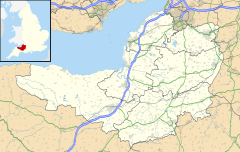| Beggearn Huish | |
|---|---|
| Hamlet | |
 Beggearn Huish farm | |
Location within Somerset | |
| OS grid reference | ST0447639609 |
| Civil parish | |
| Unitary authority | |
| Ceremonial county | |
| Region | |
| Country | England |
| Sovereign state | United Kingdom |
| Post town | Taunton |
| Postcode district | TA4 |
| Dialling code | 01984 |
| Police | Avon and Somerset |
| Fire | Devon and Somerset |
| Ambulance | South Western |
| UK Parliament | |
Beggearn Huish is a small hamlet in the civil parish of Nettlecombe, in Somerset, England. [1]
